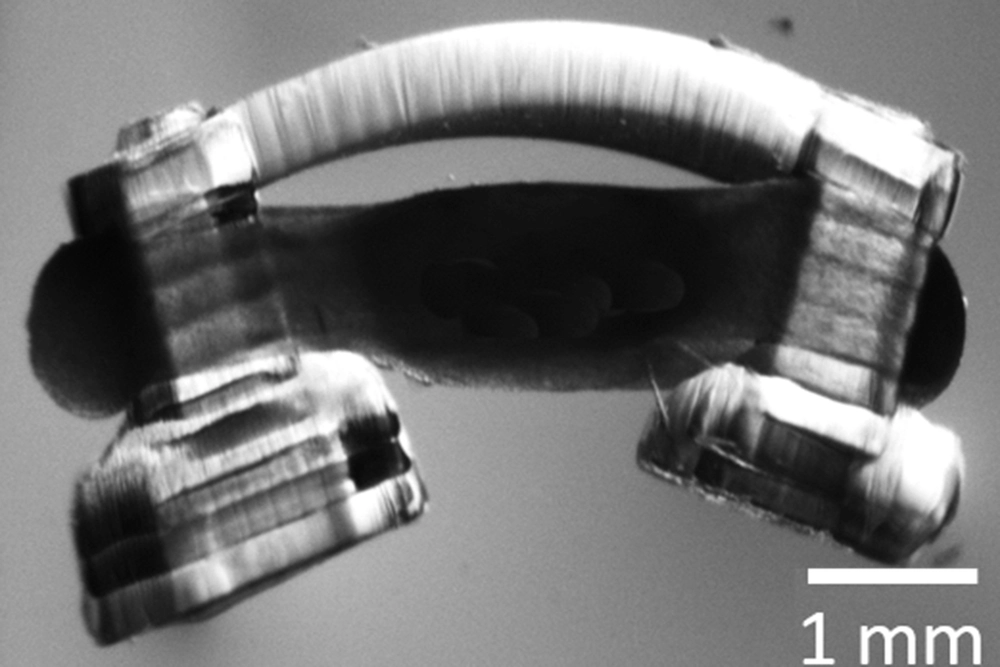
Miniature biological robots are making greater strides than ever, thanks to the spinal cord directing their steps.
University of Illinois at Urbana-Champaign researchers developed the tiny walking “spinobots,” powered by rat muscle and spinal cord tissue on a soft, 3D-printed hydrogel skeleton. While previous generations of biological robots, or bio-bots, could move forward by simple muscle contraction, the integration of the spinal cord gives them a more natural walking rhythm, said study leader Martha Gillette, (Director of the Neuroscience Program and) a professor of cell and developmental biology.
“These are the beginnings of a direction toward interactive biological devices that could have applications for neurocomputing and for restorative medicine,” Gillette said.
The researchers published their findings in the journal APL Bioengineering.
To make the spinobots, the researchers first printed the tiny skeleton: two posts for legs and a flexible “backbone,” only a few millimeters across. Then, they seeded it with muscle cells, which grew into muscle tissue. Finally, they integrated a segment of lumbar spinal cord from a rat.
The paper “Emergence of functional neuromuscular junctions in an engineered, multicellular spinal cord-muscle bioactuator” is available online. DOI: 10.1063/1.5121440